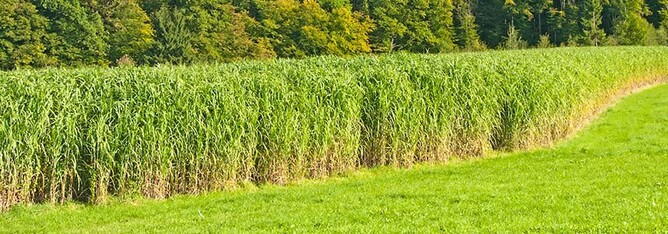November 2012
Research proposal approved – decided initially to concentrate on the eco-system service benefits generated from creating Miscanthus shelterbelts.
Ground preparation started on Aylesbury Road farm and Karetu farm. 48 bumble bee motels placed.
December 2012
Planting of Miscanthus in the first four paddocks took place.
January 2013
Three dairy farms planted with Miscanthus – a total of 10 paddocks being used to firstly investigate the growth potential of the plant itself and also to monitor its effectiveness in providing ecosystem services to dairy farms.
February 2013
Monitoring of soil moisture levels, water input and pasture production underway. Monitoring of bumble bee motels placed in six paddocks has revealed that out of 48 motels placed with 4 compartments in each motel only one compartment showed any sign of occupancy.
March 2013
We move from having 34 plants that we imported in tissue culture, to supplying several hundred thousand plants to landowners keen to grow Miscanthus. We are now looking for new sites in Northland where there is rapidly firming demand for Miscanthus biomass product, sufficient for us to need to get 7000 or more hectares planted.
At Aylesbury farm, where Miscanthus plants suffered initially when irrigation was not available, the plants are now thriving and are over a metre tall.
April 2013
The earliest plantings in Hawke’s Bay – now two years and two months from the day they were planted – are thriving in spite of the very dry summer that they have had. We now have data running from November through to the end of March on the feed value of Miscanthus from one site.
Growth of irrigated plants has continued to be impressive at Aylesbury farm with some now over 1.5 m tall. Karetu farm received its first significant rainfall since February 6 on March 19 with 26 – 30 mm of rain over two days. This resulted in what were apparently dead Miscanthus plants sprouting new shoots, indicating the robustness of this plant.
May 2013
We finally saw the end of the drought. As expected, although the Miscanthus is deep-rooted, if there is no rain, eventually the dryness gets down as far as the Miscanthus roots extend. Indications are that where establishment and particularly initial weed control was effective, the plants performed extremely well until around the end of January when they began to show drought effects.
June 2013
Interest in Miscanthus is growing rapidly and Miscanthus New Zealand (MNZ) has had a number of enquiries from people wanting to order small quantities to establish tiny trial areas of Miscanthus on their properties. We put together a Miscanthus plant cost schedule that progressively increases the cost per plant for smaller numbers.
MNZ has also been approached by the developer of a hybrid biomass processing facility that is to be based in Northland and that will require large quantities of Miscanthus feedstock material.
July 2013
Miscanthus planted in the irrigated paddocks of Aylesbury Farm achieved a maximum height of 1.5m which is impressive considering the late planting and initial lack of irrigation. This growth was achieved from initially water-stressed plants in just four months. Expected height from growth over seven months was 1m.
September 2013
In the past month or two, a lot of our focus has been on what is effectively a side business, which is the establishment of renewable diesel plants in New Zealand. Miscanthus New Zealand Limited was approached some time back by an American company called REEP Development LLC, which is half owned by a Kiwi, to see if we would be interested in use of Miscanthus through their proprietary process to make renewable diesel.
The first signs of re-growth started to appear at the beginning of September.
October 2013
The growing season for Miscanthus is well underway and even in areas that have not been harvested the Miscanthus is shooting up extremely quickly. Reports from Canterbury have indicated that while the Miscanthus started growing quite early, it does tend to get stopped by cold spells and then starts to grow again after the cold spell has finished.
December 2013
MNZ purchased the assets of the only other New Zealand importer of Miscanthus plants, making it the sole supplier of Miscanthus plants in New Zealand. So MNZ is now the owner of almost ten hectares of Miscanthus at three locations from North of Auckland to Canterbury. Also, significant harvested product in baled form now owned by MNZ and available for research and sale.
January 2014
Bumble bee motels were restocked over the winter. Previous research shows occupancy improves in season two and three after placement. Last season, no motels were used as nesting sites and this season only two out of 48 motels were occupied.
The Miscanthus that MNZ customers have established over the last few years almost all continue to thrive. The original Hawkes Bay planting was well over 2 metres by early December and the reasonably regular wet weather this season has helped in the development of the Miscanthus.
Use of the Miscanthus harvested product for fuel, renewable diesel, stock bedding, emergency stock feed, garden mulch and other more technological uses is all being actively pursued by MNZ staff and associates.
February 2014
In conjunction with Lincoln University, Miscanthus New Zealand Limited has been asked by a major New Zealand company to put in a proposal to look at undertaking some significant research into production and use of Miscanthus in an industrial setting.
April 2014
Expected maximum height at the end of season is 2-3m, despite early setbacks from no irrigation during the spring drought these Miscanthus plants demonstrated impressive growth rates.
A group from DairyNZ visited Aylesbury Farm to find out how Miscanthus can benefit dairy farms and become an integrated component of the farming system. A journal article on the ecosystem services and ecosytem dis-services provided by Miscanthus as a shelterbelt on dairy farms is being prepared with a view to submission late winter.


